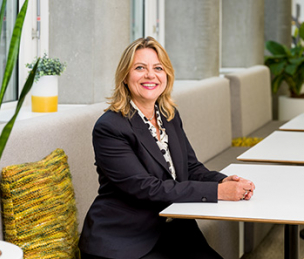Displaying 1 - 4 of 4
-
Hagoort, P., & Özyürek, A. (2024). Extending the architecture of language from a multimodal perspective. Topics in Cognitive Science. Advance online publication. doi:10.1111/tops.12728.
Abstract
Language is inherently multimodal. In spoken languages, combined spoken and visual signals (e.g., co-speech gestures) are an integral part of linguistic structure and language representation. This requires an extension of the parallel architecture, which needs to include the visual signals concomitant to speech. We present the evidence for the multimodality of language. In addition, we propose that distributional semantics might provide a format for integrating speech and co-speech gestures in a common semantic representation. -
Karadöller, D. Z., Peeters, D., Manhardt, F., Özyürek, A., & Ortega, G. (2024). Iconicity and gesture jointly facilitate learning of second language signs at first exposure in hearing non-signers. Language Learning. Advance online publication. doi:10.1111/lang.12636.
Abstract
When learning a spoken second language (L2), words overlapping in form and meaning with one’s native language (L1) help break into the new language. When non-signing speakers learn a sign language as L2, such forms are absent because of the modality differences (L1:speech, L2:sign). In such cases, non-signing speakers might use iconic form-meaning mappings in signs or their own gestural experience as gateways into the to-be-acquired sign language. Here, we investigated how both these factors may contribute jointly to the acquisition of sign language vocabulary by hearing non-signers. Participants were presented with three types of sign in NGT (Sign Language of the Netherlands): arbitrary signs, iconic signs with high or low gesture overlap. Signs that were both iconic and highly overlapping with gestures boosted learning most at first exposure, and this effect remained the day after. Findings highlight the influence of modality-specific factors supporting the acquisition of a signed lexicon. -
Sekine, K., & Özyürek, A. (2024). Children benefit from gestures to understand degraded speech but to a lesser extent than adults. Frontiers in Psychology, 14: 1305562. doi:10.3389/fpsyg.2023.1305562.
Abstract
The present study investigated to what extent children, compared to adults, benefit from gestures to disambiguate degraded speech by manipulating speech signals and manual modality. Dutch-speaking adults (N = 20) and 6- and 7-year-old children (N = 15) were presented with a series of video clips in which an actor produced a Dutch action verb with or without an accompanying iconic gesture. Participants were then asked to repeat what they had heard. The speech signal was either clear or altered into 4- or 8-band noise-vocoded speech. Children had more difficulty than adults in disambiguating degraded speech in the speech-only condition. However, when presented with both speech and gestures, children reached a comparable level of accuracy to that of adults in the degraded-speech-only condition. Furthermore, for adults, the enhancement of gestures was greater in the 4-band condition than in the 8-band condition, whereas children showed the opposite pattern. Gestures help children to disambiguate degraded speech, but children need more phonological information than adults to benefit from use of gestures. Children’s multimodal language integration needs to further develop to adapt flexibly to challenging situations such as degraded speech, as tested in our study, or instances where speech is heard with environmental noise or through a face mask.Additional information
supplemental material -
Senghas, A., Kita, S., & Ozyurek, A. (2004). Children creating core properties of language: Evidence from an emerging sign language in Nicaragua. Science, 305(5691), 1779-1782. doi:10.1126/science.1100199.
Abstract
A new sign language has been created by deaf Nicaraguans over the past 25 years, providing an opportunity to observe the inception of universal hallmarks of language. We found that in their initial creation of the language, children analyzed complex events into basic elements and sequenced these elements into hierarchically structured expressions according to principles not observed in gestures accompanying speech in the surrounding language. Successive cohorts of learners extended this procedure, transforming Nicaraguan signing from its early gestural form into a linguistic system. We propose that this early segmentation and recombination reflect mechanisms with which children learn, and thereby perpetuate, language. Thus, children naturally possess learning abilities capable of giving language its fundamental structure.

Share this page